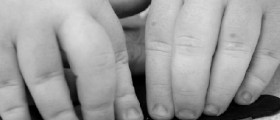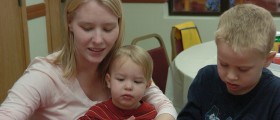
Dyspraxia (or developmental dyspraxia or coordination disorder) can be defined as an impairment or immaturity in the organization of movement. Many persons who have dyspraxia also have problems with thought, perception and language.
This condition can be diagnosed at any point in life but today more and more persons with dyspraxia are diagnosed at an early age of childhood. An early diagnose of dyspraxia makes it possible to take the steps necessary to help the child cope with it and to learn how to organize their life according to the condition. Also, children whose dyspraxia has been identified earlier in life seem to have less trouble in being accepted by their peers. In the adolescence, the problems usually change and become more aggravating.
Dyspraxia symptoms are usually quite clear at a very early age. Babies with dyspraxia are easily irritated and may have issues with feeding. The usual developmental milestones are hard for them to achieve, for example they may skip the crawling phase and move to walking directly after “bottom shuffle”. They also have difficulty sitting on their own.
If the dyspraxia is not recognized, diagnosed and confronted in the pre-school age, children may have difficulties at school. As a result, their self-esteem suffers and the frustration increases.
The motor activity of children with dyspraxia may be overemphasized, for example, they may clap their hands constantly, swing or tap their feet while sitting, and they are generally unable to sit still. They are easily distressed and tend to have temper tantrums.
Children with dyspraxia usually have no sense of danger, so they should be monitored because it is not unusual for them to try to jump from heights and similar. They frequently bump into objects or hurt themselves otherwise.
They avoid toys and games that include manual dexterity and skill, they do not like to play house or to dress up. They also have difficulty riding a tricycle.
Because they appear “strange” to their peers, children with dyspraxia seek the company of adults. They may be sensitive to touch, sound, and even the new clothes. In interaction with parents and teachers they tend to discard verbal instructions and have problems with comprehending them.
By the age of seven, the problems become more wide-ranged. A child may have problems with adapting to a school routine, in dressing, drawing and writing. Their physical skills are underdeveloped and they also may suffer from migraine and headaches. In class, they often do not complete the tasks and have poor concentration and listening skills.
By the age of eight and nine, children with dyspraxia shows little to no interest in education and by the time they reach the age when they should start attending a secondary school, they tend to skip school or abandon the educational system.

















Your thoughts on this
Loading...